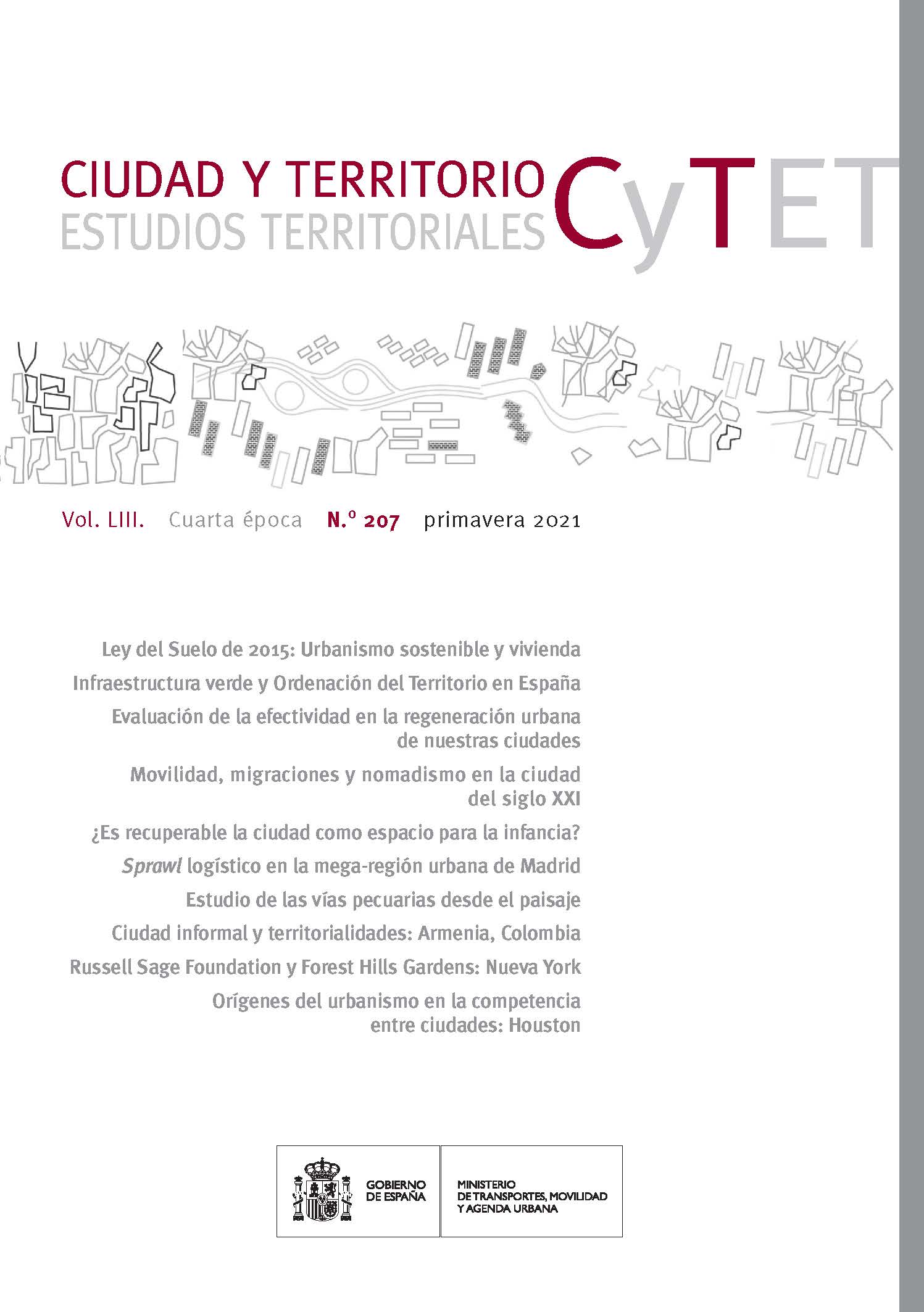Origins of the use of urbanism in cities competition: Houston case
DOI:
https://doi.org/10.37230/CyTET.2021.207.10Keywords:
Cities competition, Houston, Sunbelt, Zoning, Land UseAbstract
This article analyzes the origins of the use of urbanism in the competition between cities in order to attract economic activities. Regarding the time period, it focuses in the 1980s, when this practice started to expand globally, in coincidence with a similar process in the economy. As for the geography, it uses the American Sunbelt as case study. It starts analyzing the figure of the ‘developer-municipalities’, and the historic roots of the ‘weak urbanism’ in the United States. In a second part, it focuses on the case of Houston, a city with no urban plan. It analyzes the few tools that the public administration has to operate in the city, as well as the tools used by developers in order to avoid the risks derived of the absence of planning. Finally, the article concludes with several considerations on the advantages and inconveniences of the no-plan policy for Houston in the analyzed period, as well as on the reasons that explain the support of the local community.
Downloads
Published
How to Cite
Issue
Section
License
Copyright (c) 2021 Carlos GARCÍA-VÁZQUEZ

This work is licensed under a Creative Commons Attribution-NonCommercial-NoDerivatives 4.0 International License.
Considering the provisions of the current legislation on Intellectual Property, and in accordance with them, all authors publishing in CyTET give -in a non-exclusive way and without time limit- to the Ministry of Transport, Mobility and Urban Agenda the rights to disseminate, reproduce, communicate and distribute in any current or future format, on paper or electronic, the original or derived version of their work under a Creative Commons Attribution-NonCommercial-NoDerivative 4.0 license International (CC BY-NC-ND 4.0), as well as to include or assign to third parties the inclusion of its content in national and international indexes, repositories and databases, with reference and recognition in any case of its authorship.
In addition, when sending the work, the author(s) declares that it is an original work in which the sources that have been used are recognized, committing to respect the scientific evidence, to no longer modify the original data and to verify or refute its hypothesis. Author(s) also declare that the essential content of the work has not been previously published nor will it be published in any other publication while it is under evaluation by CyTET; and that it has not been simultaneously sent to another journal.
Authors must sign a Transfer of Rights Form, which will be sent to them from the CyTET Secretariat once the article is accepted for publication.
With the aim of promoting the dissemination of knowledge, CyTET joins the Open Journal Access (OA) movement and delivers all of its content to various national and international indexes, repositories and databases under this protocol; therefore, the submission of a work to be published in the journal presupposes the explicit acceptance by the author of this distribution method.
Authors are encouraged to reproduce and host their work published in CyTET in institutional repositories, web pages, etc. with the intention of contributing to the improvement of the transfer of knowledge and the citation of said works.








 Enlace a CyTET en Linkedin
Enlace a CyTET en Linkedin